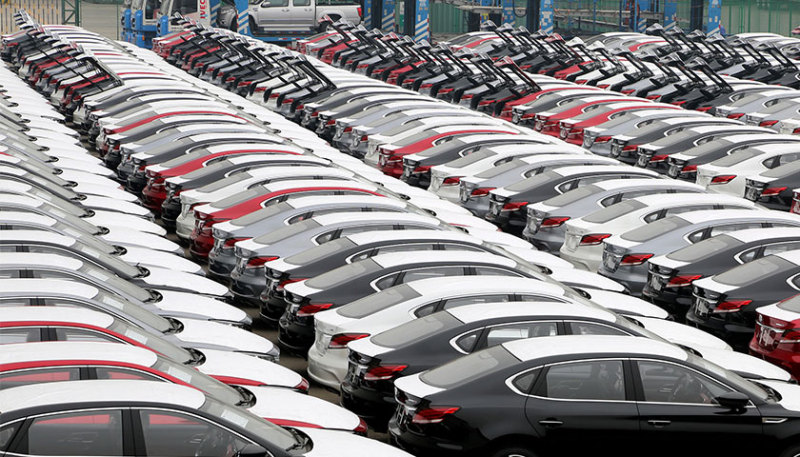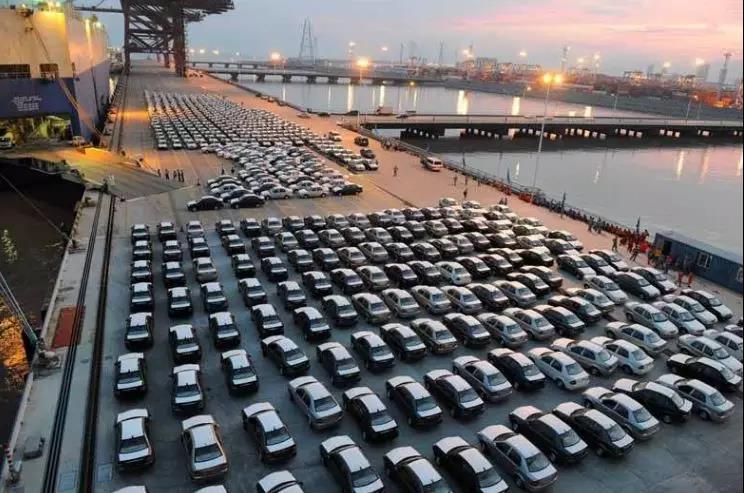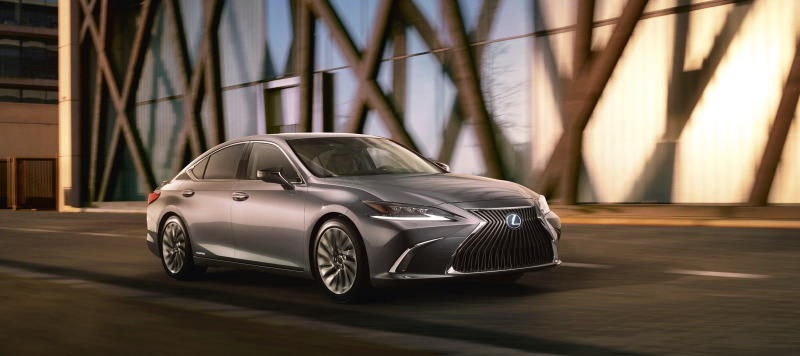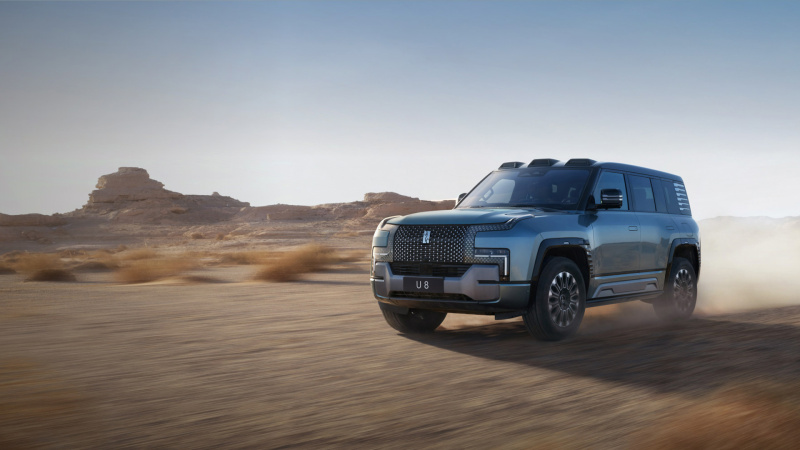China's Imported Car Numbers Plummet by 39% Amid Market Shifts
 Kevin WongApr 29, 2025, 05:51 PM
Kevin WongApr 29, 2025, 05:51 PM

【PCauto】Since 2017, the importation of vehicles has been on a continuous downward trajectory. Back in 2017, the number of imported cars in China stood at a robust 1.24 million units, but in the following years, this figure has decreased annually at an average rate of about 8%.
By 2023, total imports had fallen to 800,000 units. This downward trend did not stabilize in 2024; instead, it intensified, with annual import numbers dropping to just 700,000 units—an additional decline of 12% compared to the previous year.
Entering 2025, the precarious state of China’s imported car market shows no signs of recovery. In the first three months alone, imports totaled merely 95,000 vehicles, a significant 39% decrease compared to the same period last year. Such a decline is particularly rare for the first quarter in recent years.

In terms of importing countries, the top three sources for China in the first quarter of 2025 were Japan, Germany, and Slovakia, with imports totaling 30,500 units, 23,700 units, and 17,700 units, respectively.
Japan saw a year-on-year decline of 32%, while Germany fell by 35%. Slovakia was the only country on the list to achieve a year-on-year increase, rising by 12%.
Other countries experienced sharp declines as well, with the U.S. import numbers down by 67% to 8,900 units and the UK down by 44% to 8,400 units. In recent years, the number of cars imported from the U.S. has plummeted from 280,000 in 2017 to 109,000 in 2024, and the downward trend continued into 2025.
Additionally, imports from Mexico, Sweden, Austria, South Korea, and Italy also fell, with declines of 4%, 69%, 59%, 89%, and 64% respectively.

In terms of brands, Lexus, Benz, and BMW led the luxury segment in the first quarter of 2025, with sales of 40,900 units, 29,000 units, and 16,300 units, respectively, marking year-on-year declines of 1%, 14%, and 66%.
Land Rover, Audi, and Porsche followed closely behind with import totals of 10,000 units, 9,000 units, and 8,500 units, respectively, reflecting year-on-year drops of 13%, 41%, and 38%.
Other brands such as Volvo, MINI, Jaguar, and Lincoln also faced declines, experiencing drops of 25%, 57%, 86%, and 99%.
Among high-end luxury brands, Bentley led with 496 units sold, down 26% year-on-year. Ferrari and Rolls Royce followed with imports of 182 units and 179 units, corresponding to year-on-year drops of 16% and 31%, respectively. Maserati, Lamborghini, and Aston Martin had import totals of 167 units, 100 units, and 87 units, while McLaren saw a remarkable increase of 117%, although total sales were only 13 units for the quarter.
In terms of vehicle models, the Lexus ES continued to dominate the Chinese market in the first quarter of 2025, with sales of 25,166 units. The Lexus RX and Lexus NX also made the top five, with sales of 8,177 units and 4,238 units, respectively. Benz GLE ranked second with 9,873 units sold.

Faced with these market shifts, industry insiders note that the decline in the imported car is closely linked to changes in the overall automotive environment in China. The improvement in quality among local automotive brands is a significant factor. As domestic brands continue to advance technologically, consumers are increasingly opting for cost-effective locally produced vehicles.
Brands like BYD and NIO have successfully attracted many consumers with their high-end electric vehicle models, featuring advanced battery technology, intelligent driving assistance systems, and stylish designs, directly diverting their interest away from traditional imported luxury cars.
The instability of the global economic landscape and changes in the international trade environment have also significantly impacted China's imported car market. Factors such as currency fluctuations and tariff adjustments have increased the cost of imported vehicles, thereby affecting their market competitiveness.

For instance, in February 2025, China imposed additional tariffs on certain imports from the U.S., with large-displacement vehicles and pickup trucks constituting over 34% of the affected autos, significantly raising costs for U.S. imports. Coupled with the complexities in U.S.-China trade relations, the import volumes of American manufacturers like Ford and GM have consistently declined.
While the imported car market is slumping, China's automotive exports are witnessing strong growth. According to the China Association of Automobile Manufacturers (CAAM), total automotive exports reached 1.42 million units in the first quarter of 2025, up 7.3% year-on-year, with a notable increase in the share of new energy vehicles. Five companies—Chery, BYD, SAIC, Changan, and Geely—each exported over 100,000 units, with Chery leading the way at 254,000 units, accounting for 17.9% of total exports. BYD also saw a remarkable growth, exporting 214,000 units, more than doubling its volume.

This trend of declining imports amid rising exports marks China’s transformation from an automotive importing country to an exporting one.
If any infringement occurs, please contact us for deletion
Trending News

Toyota Tundra Owner Achieves the Second Million-Mile Milestone
[PCauto] The mileage often measures the quality and durability of a car, and Victor Sheppard and his two Toyota Tundra pickups have set a staggering record.With Victor Sheppard's dedication and careful maintenance of the Toyota Tundra, he successfully drove two different Tundra pickups over 1 million miles (approximately 1,609,340 kilometers).In 2007, Sheppard bought a brand new Toyota Tundra CrewMax. Over the next nine years, as a contractor, he worked across the United States, from Louisiana t

BYD Plans to Promote 1000V High Voltage Super Charging Stations and Its Models on a Large Scale
【PCauto】Recently, the news that BYD plans to massively implement a 1000V high-voltage supercharging platform has attracted widespread attention. It is reported that this platform will be launched in the middle of March this year and supports super-fast charging above 5C. After its release, it will quickly be popularized to its own models and large-scale construction of 1000V supercharging stations.This move will undoubtedly set off a wave in the new energy vehicle market. Let's delve into the te

BYD YANGWANG U7 Launches with World's First Suspension Charging Tech
[PCauto] On March 27, BYD YANGWANG U7 was launched, with two power versions of pure electric and plug-in hybrid, a total of four models. YANGWANG U7 EV Five-seater Luxury Edition, priced at about 292.85 million baht/RM38.31 YANGWANG U7 EV Four-seater Flagship Edition, priced at about 330.04 million baht/RM43.19 YANGWANG U7 PHEV Five-seater Luxury Edition, priced at about 292.85 million baht/RM38.31 YANGWANG U7 PHEV Four-seater Flagship Edition, priced at about 330.04 million bah

XPENG G9 is about to be launched in China, bringing 66 upgrades in features
【PCauto】XPENG has recently announced that the 2025 XPENG G9 will soon be launched in China. Although the official did not announce the time and price, the success of XPENG G6 and X9 has rekindled expectations for the once-failed G9 by XPENG. In terms of appearance, the G9 continues the X-BOT FACE 3.0 design language, with a closed grill at the front paired with split-style headlights on both sides, new two-tone collision colors and all-black body styles, with a petal-style wheel hub. Combining

HAVAL H6: A Balanced Performer and a Reliable Choice for Family SUVs
Price of HAVAL H6HAVAL H6 has a total of 1 submodel.• 2024 HAVAL H6 HEV priced at RM 139,800Driving experience of the HAVAL H6As for the power, the HAVAL H6 is equipped with a 1.5L 4-cylinder turbocharging source, delivering a maximum power output of 110 kW and a peak torque of 230 N·M, with maximum torque available at 1500-4000 rpm. The power is transmitted to the Front Wheel via an AT transmission, achieving a combined fuel consumption of 5.8 L/100km. This p
Popular Cars
Car Compare

